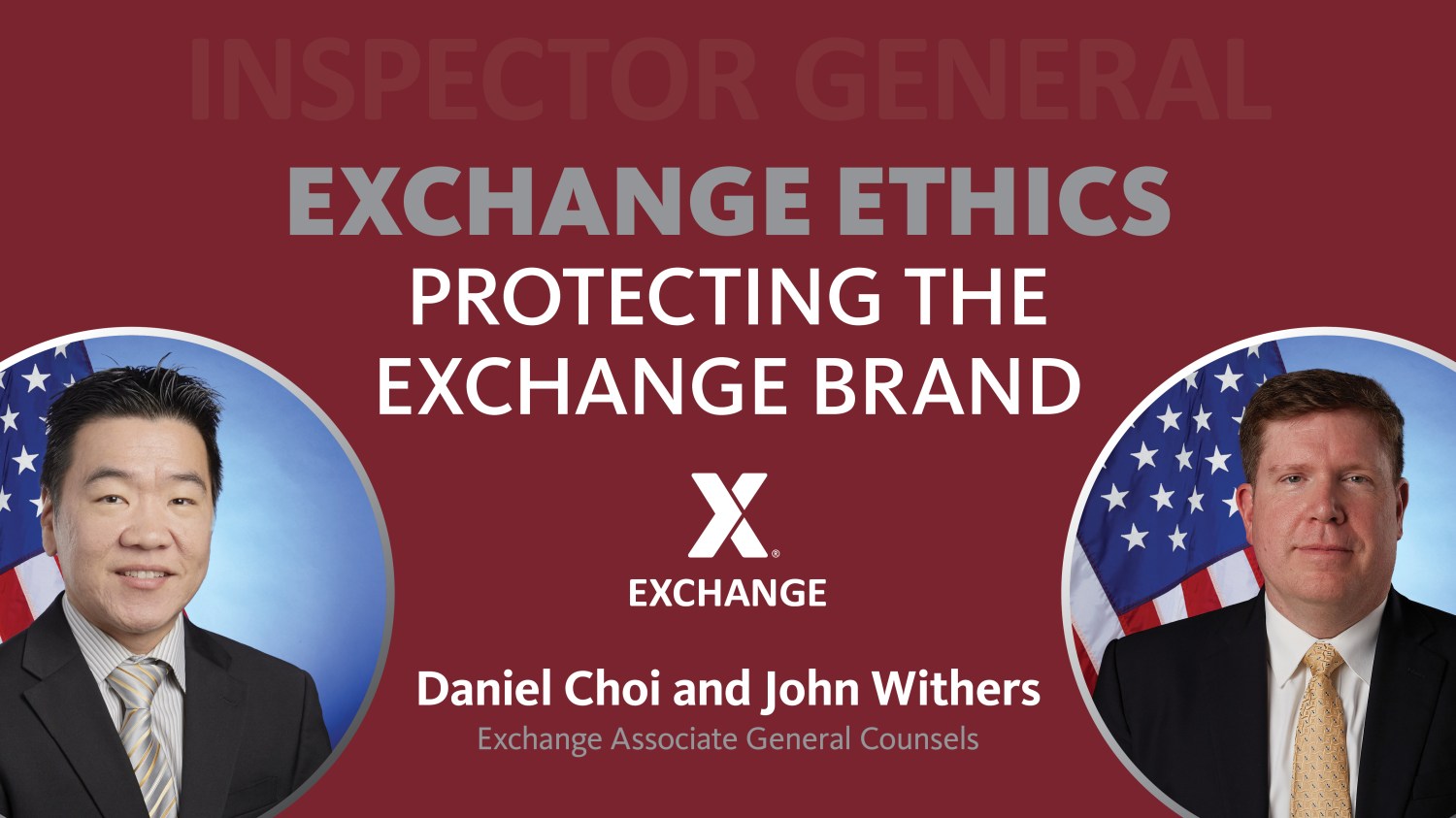What You Need to Know About the Importance of Safeguarding the Exchange Logo

Let’s say you were at your local mall, when you see a teenager walk by with a shirt featuring the Exchange logo alongside the Dallas Cowboys star. After the initial shock, or perhaps irritation, at seeing the precious Exchange logo next to a Cowboys logo subsides, your next thoughts might be, “Wait, why is the Exchange partnering with the Dallas Cowboys?” followed by, “Is the Exchange endorsing the Cowboys?”
That’s when your years of ethics training will kick in and you’ll remember something you saw in the Joint Ethics Regulation (JER) (which, of course, you keep on your desktop): “DoD Personnel are prohibited from using their official position to either affirmatively endorse a non-federal entity (NFE), product, service or enterprise, or by implying DoD endorsement through the individual’s authorized use of their official position or public office.”
To the average layperson, it may not be a big deal to see the Exchange logo next to say, the McDonald’s arches, the Starbucks mermaid, or the Apple…apple. But since the Exchange is part of the federal government, we cannot endorse, or even appear to endorse, entities outside the government. Not only because it would show favoritism, but also there would be at a minimum, the appearance of preferential treatment.
Not only could the shirt implicate government ethics, but it could present trademark issues as well. Logos, slogans, company names and other characteristics of a brand are often protected by trademarks. The Exchange logo, for example, is registered as a service mark with the U.S. Patent and Trademark Office.
Historically, trademarks evolved as a way to identify goods or services with their origin. Craftsmen would affix a distinct mark to their goods, and customers could trust that the goods were from a particular source – with the quality they associated with that source. Laws developed to protect marks so that craftsmen could not use someone else’s mark on their goods to suggest they came from that other source. Today, federal laws, such as the Lanham Act (15 U.S. Code Chapter 22), prohibit others from using our trademarks – or similar marks – if any likelihood of confusion as to the source might result.
These laws protect consumers as well as the value of the brand. Inferior counterfeit goods could weaken the perception of Exchange quality. Likewise, the association with other organizations could impair the brand’s distinctiveness or could devalue it by linking it with causes that don’t share our values. We want to make sure that we protect the Exchange brand by ensuring that use of our logos by others is properly licensed.
Finally, the Exchange has earned its stellar reputation by keeping the mission first and doing right by our customers. In other words, people trust us. Thus, it’s no surprise that outside companies may want to also benefit from that goodwill by including our name, brand and/or logo in their press releases or media portfolio. However, although we highlight our partnerships and successes in various media releases, outside companies, absent our permission, cannot do the same because of the aforementioned endorsement prohibitions. This is why whenever an outside party requests to invoke the Exchange brand, it is best to contact Corporate Communication, which, in coordination with the ethics office, will provide guidance. Similarly, any trademark issues should be brought up to the OGC business law branch, at trademarks@aafes.com.





